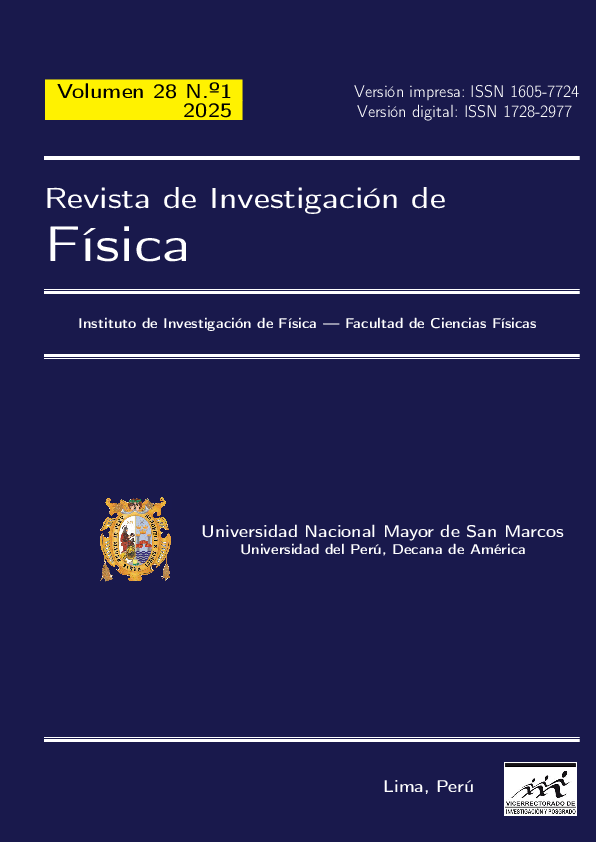Covariability between sea surface temperature and wind stress on seasonal and interannualtimescales using satellite observations off Peru
DOI:
https://doi.org/10.15381/rif.v28i1.29044Keywords:
SST, wind stress, divergence, curlAbstract
Mesoscale ocean-atmosphere interaction between sea surface temperature (SST) and wind stress was investigated using 14 years (2008-2021) of ASCAT and OSTIA satellite observations. The study area was defined between the coastline and 200 nautical miles offshore, and between latitudes 3°S and 18°S. To quantify spatial and temporal variability in the strength of the interaction, binned scatterplots were constructed, and coupling coefficients were calculated between crosswind SST gradients and wind stress curl and between downwind SST gradients and wind stress divergence. The analysis reveals a strong seasonal variability in the strength of the coupling (77 % of the total variance), peaking during the summer and fall. Interannual variability is comparatively lower (6.6 % of the total variance). Finally, the method of Singular Value Decomposition (SVD) of coupled fields was applied, extracting spatial and temporal patterns of seasonal and interannual variability. The power spectrum of the interannual pattern exhibited two coupling peaks at 3.5 and 7 years.
Downloads
Published
Issue
Section
License
Copyright (c) 2025 Edward Alburqueque, Joel Rojas

This work is licensed under a Creative Commons Attribution 4.0 International License.
THE AUTHORS RETAIN THEIR RIGHTS:
a. The authors retain their trademark and patent rights, as well as any process or procedure described in the article.
b. The authors retain the right to share, copy, distribute, perform and publicly communicate the article published in the Revista de Investigación de Física (for example, place it in an institutional repository or publish it in a book), with an acknowledgment of its initial publication in the Revista de Investigación de Física.
c. The authors retain the right to make a subsequent publication of their work, to use the article or any part of it (for example: a compilation of their works, notes for conferences, thesis, or for a book), provided that they indicate the source. of publication (authors of the work, journal, volume, number and date).






